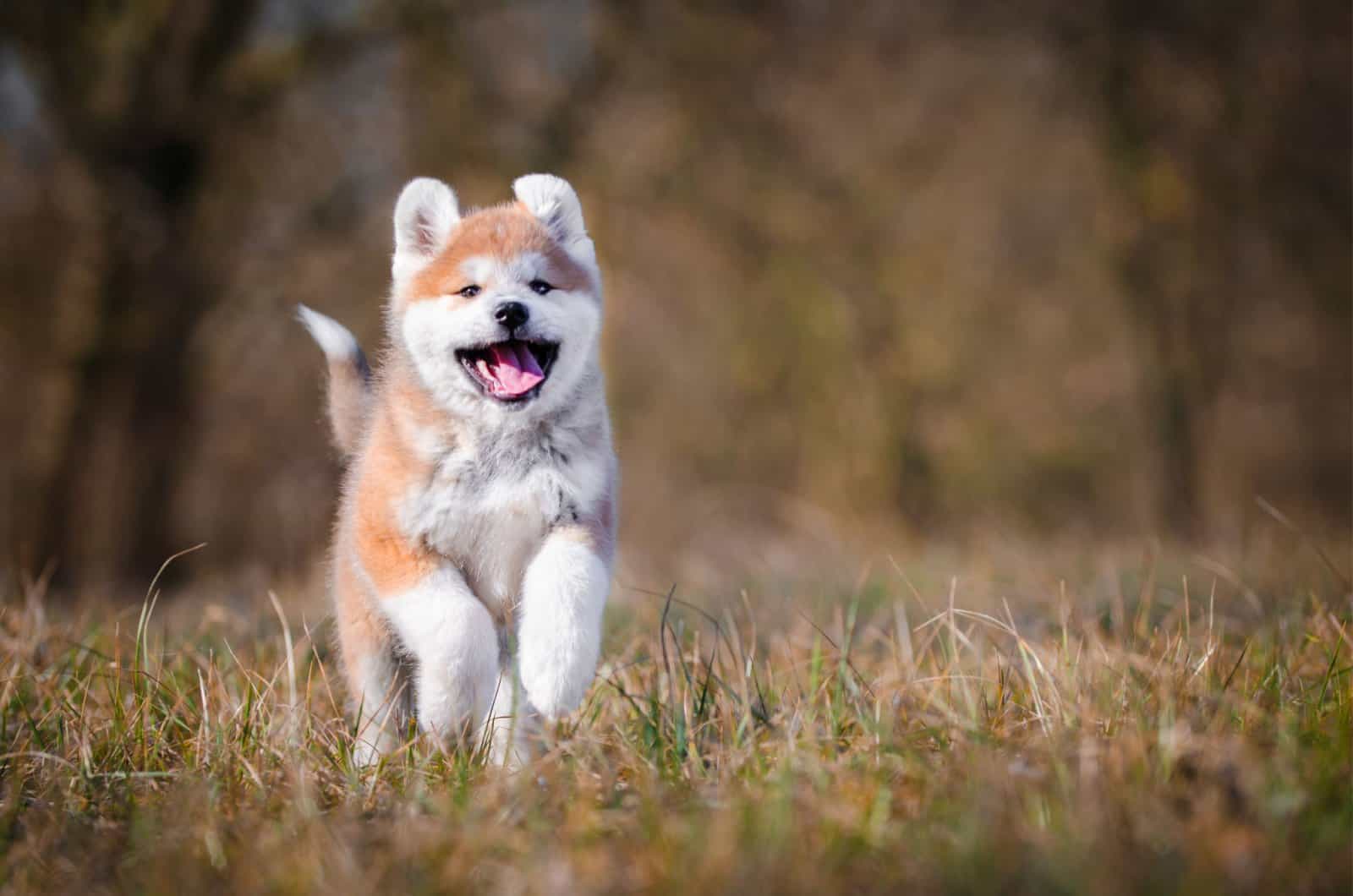I fell in love with the Akita dog breed after watching the heart-wrenching movie, Hachi: A Dog’s Tale. If you haven’t seen it, I highly recommend it, but beware that there’s a high chance you’ll end up crying (don’t blame us, please…).
After that movie, I simply had to research everything about this dog breed, and let me tell you… I was fascinated by it. Not only are these dogs extremely beautiful, but they also have quite an impressive history.
Akita Inu dogs are originally from Japan, where they have quite the status of a legend, and are one of Japan’s most cherished symbols. For many years, they have been highly prized with Japanese royalty, especially for their hunting skills.
How much Akitas actually mean to the Japanese people shows the fact that when a child is born, the family usually receives the Akita figurine, which symbolizes good health, a lot of happiness, and a long life.
Akitas are large dogs of imposing stature and quite a strong personality. Although Hachi legend will make you think that they are perfect doggos for everyone, their highly intelligent and independent nature does not exactly make them the right dog breed for first-time dog owners.
Today, there are two varieties of this historic dog breed — the pure Japanese strain called “Akita Inu”, and the American version called the “American Akita”.
There is still a lot of debate around these two breeds, but finally, as of 2020, even the American Kennel Club recognized them as two separate breeds.
The Akita growth chart will help you understand the difference between the two, and more importantly, will serve as a guide throughout your Akita puppy growth and all the challenges that come along with it. Keep on reading to find out what exactly should you expect as an Akita owner.
Akita Growth Chart For Males
[table id=610 /]
Akita Growth Chart For Females
[table id=611 /]
Akita Growth Chart: An Overview
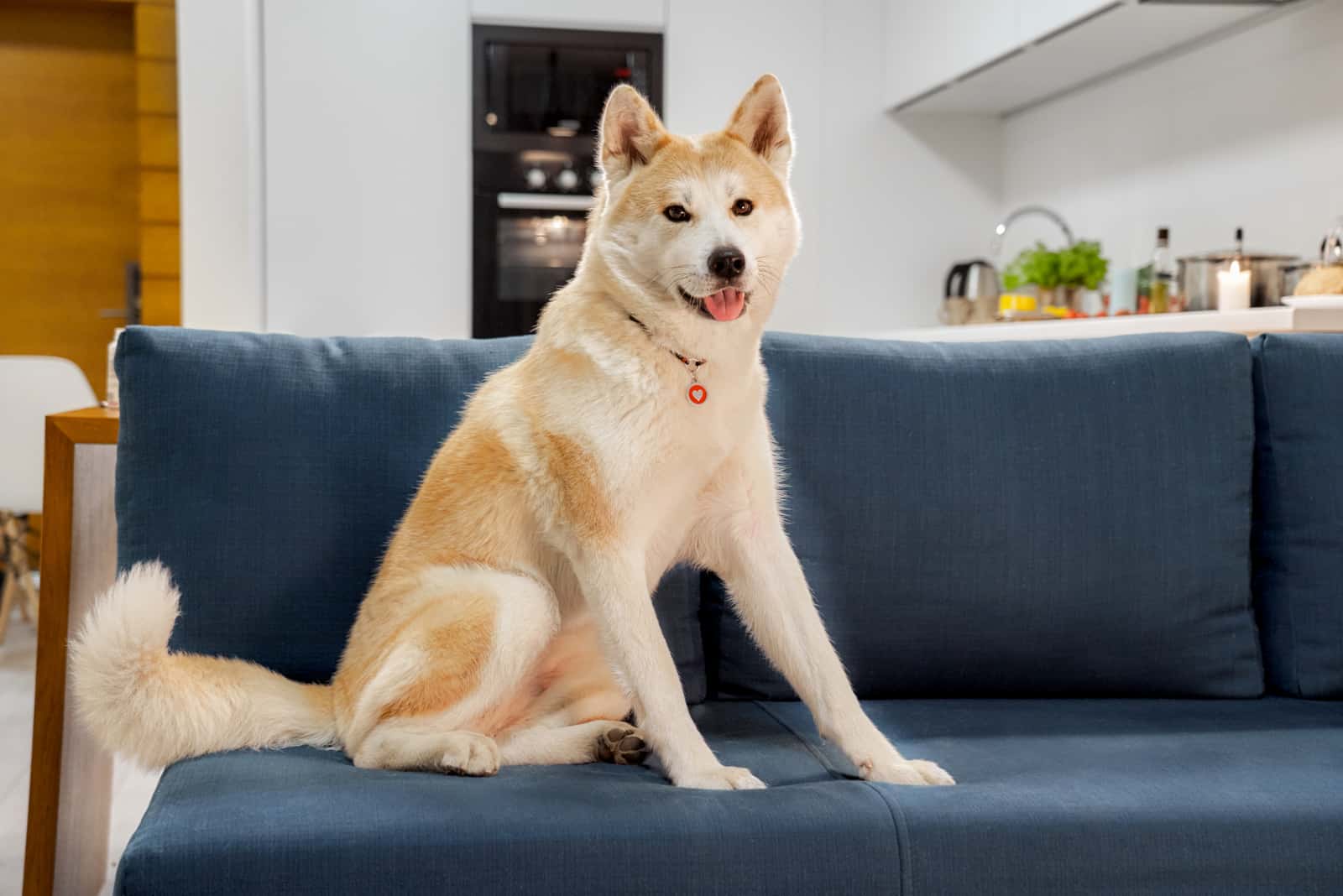
First of all, let us clarify at the beginning that height and weight proportions provided in the chart above are general substances set by the AKC Japanese Akita Inu Standard (provided by JACA), and should serve as a general guide throughout your dog’s growth.
Not all dogs can be the same, so if you do experience some minimal variations in your dog’s height and weight, it is completely normal, and it should be considered healthy.
However, if either of your dog’s weight and height numbers are far from the standard, it should be seen as a wake-up call that something might not be right. If you notice continuous deviations, you should consider consulting your veterinarian.
He will do an individual assessment of your Akita, and establish if there is anything wrong that is affecting your pup’s healthy growth and that should be medically treated.
The full-grown size of your Akita also depends on which type of Akita you own. As we have previously mentioned, there are two breeds – the native Japanese Akita, and the American Akita. There are some slight differences between these two breeds, including their size.
American Vs Japanese Akita: Is There A Difference?
Yes, there is a difference between these two types of Akita dogs. Actually, there are quite a few. Japanese Akitas are usually smaller and lighter than American Akitas, which are larger and heavier.
According to the Japanese Akita Inu Club of America (JACA), the average height of male Japanese Akitas is 25 to 27.5 inches at the withers, and the average weight is approximately 65 to 75 pounds.
When it comes to Japanese female Akitas, the average height is 22.5 to 25 inches at the withers, and the average weight is 55 to 65 pounds.
However, according to the American Kennel Club (AKC), the average height of male American Akitas ranges from 26 to 28 inches at the withers, and the average weight is approximately 100 to 130 pounds.
Female Akitas are a little bit smaller than male Akitas (even in the American version), with their average height being 24 to 26 inches at the withers, and their average weight ranging from 70 to 100 pounds.
Besides the general differences in the height and weight charts, there are also some differences regarding physical appearances.
Due to their strict breed standard, Japanese Akitas only come in white, red fawn, sesame, and brindle coat color variations, whereas the American Akita can come in all dog breed colors, with pinto, brindle, and solid white (with a mask) being the most common ones.
Additionally, Japanese Akitas usually have more of a fox-shaped head, are less muscular with a slimmer appearance, have a tail that curls over their back, and have almond-shaped eyes.
American Akitas have more of a bear-shaped head, look more muscular, and have small, deep-set eyes.
Among other things in common, both the Japanese and the American Akita have a thick, double coat that will most likely shed a lot, especially during the shedding season.
Akita Growth Chart: How Fast Do Akitas Grow?
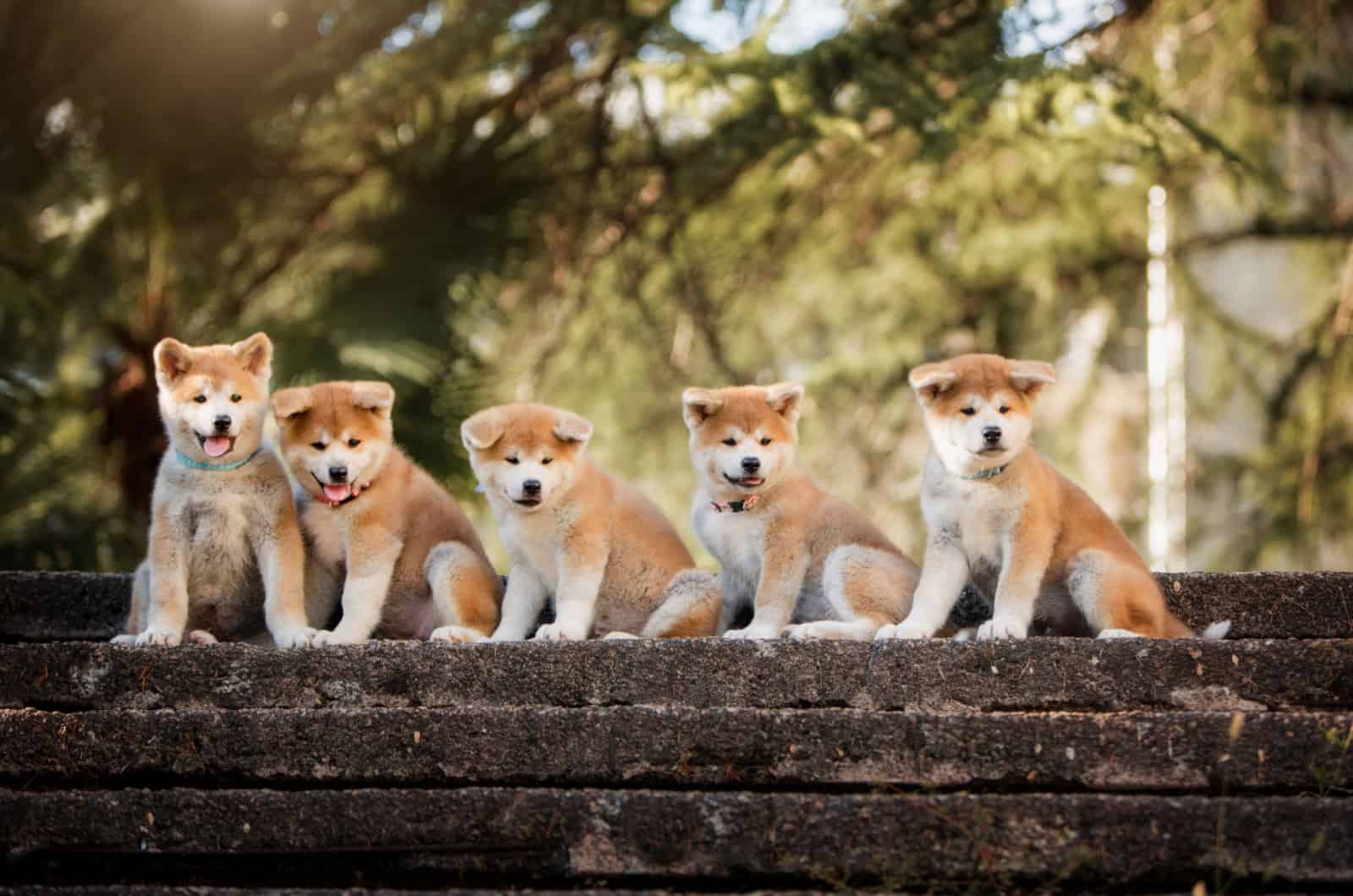
We have seen how the numbers stand in the chart above, but now it is time for us to describe more in detail how these beautiful Spitz-type dogs develop over certain periods, along with their developmental stages.
From puppyhood to adulthood – choose your favorite puppy time:
First Two Weeks Of Life
In the first two weeks of their life, Akita puppies are still unable to take care of themselves. Their mother is the one who does the majority of the work. Puppies depend on their mothers for warmth, comfort, and nourishment.
They will eat mommy’s milk as much she allows them and as much as they need it. In special cases, when mothers are unable to feed their babies, puppy formula is given to puppies as a substitute for mother’s milk.
At this stage, puppies are unable to walk, they have their eyes closed, and they pretty much depend on their mother to survive.
Two To Four Weeks
At this stage, puppies start gaining a little bit of their puppy weight (they weigh approximately eight to nine pounds), and they should have their eyes opened already. They might even start to waddle around a bit, but they are still unable to walk properly.
They are still dependent on their mommy’s milk and time spent with her in order to grow.
Four To Twelve Weeks
This is the period when you should start seeing a lot of changes. When puppies are around four weeks old, their teeth begin to erupt, and the weaning process should start. Most mothers start the weaning process by themselves, and by the seventh week, your puppy should be fully weaned off.
This is the crucial period when you should introduce your puppy to high-quality puppy food and drinking water. Around eight weeks is when puppies tend to go to their new home.
Responsible breeders will most likely advise new owners as to how much they should be feeding their new pup and which food to use.
It is best for new owners to continue, at least for a bit, with the same type of dog food since a sudden change of food can cause many digestive issues for Akita puppies, such as vomiting and diarrhea.
Trying to find the perfect Akita breeder? Check out our list of the best Akita breeders in the USA and in the UK!
Four To Ten Months
Up to ten months of age is when Akita dogs form most of their development. This is the period when they double their weight and height, and they grow more rapidly from there.
The six-month-old male Akita will weigh 60 – 66 pounds, and stand at 22 – 24 inches tall. The six-month-old female Akita will weigh 52 – 55 pounds, and stand at 21 – 23 inches tall.
As you can see, there is usually a slight difference between males and females, but each dog is different, and you might not see that much of a difference in your dog. Minor deviations from these numbers are always acceptable, and are considered quite normal.
Your dog will continue growing rapidly up to around ten months of age; however, they will not yet achieve maturity.
One To Two Years Of Age
Over the next couple of months, your dog will continue to grow, although very slightly. This is the period when your dog reaches its sexual maturity and when females become fertile; however, it is not recommended to start breeding your dog quite yet because they are still immature.
Most reputable breeders will wait with pregnancy until the female Akita reaches 18 months to two years of age as then, they are at their prime of fertility, and the chances of successful breeding are much higher.
Premature pregnancy can be very dangerous for dogs because there are high chances of complications, the death of puppies, and even the death of the mother.
RELATED: How To Tell If Your Dog Is Pregnant? 14 Signs
Adulthood (2 to 7 Years Old)
At two years old is when your puppy should reach its adulthood and stop growing. By this time, you should have already switched your dog’s diet to adult dog food. If you continue with puppy food, there is a high chance that your dog will end up being overweight.
At this time, your full-grown dog should weigh around 79 to 85 pounds for males, and 60 to 64 pounds for females. Male Akitas will stand at 26 to 27.5 inches tall, and female Akitas at 24 to 25 inches tall.
Keep in mind that we are talking about Akita Inu dogs. American Akitas will be slightly larger and taller as we have discussed previously.
RELATED: Akita Mixes: 43 Enchanting Hybrid Dogs
When Do Akitas Stop Growing?
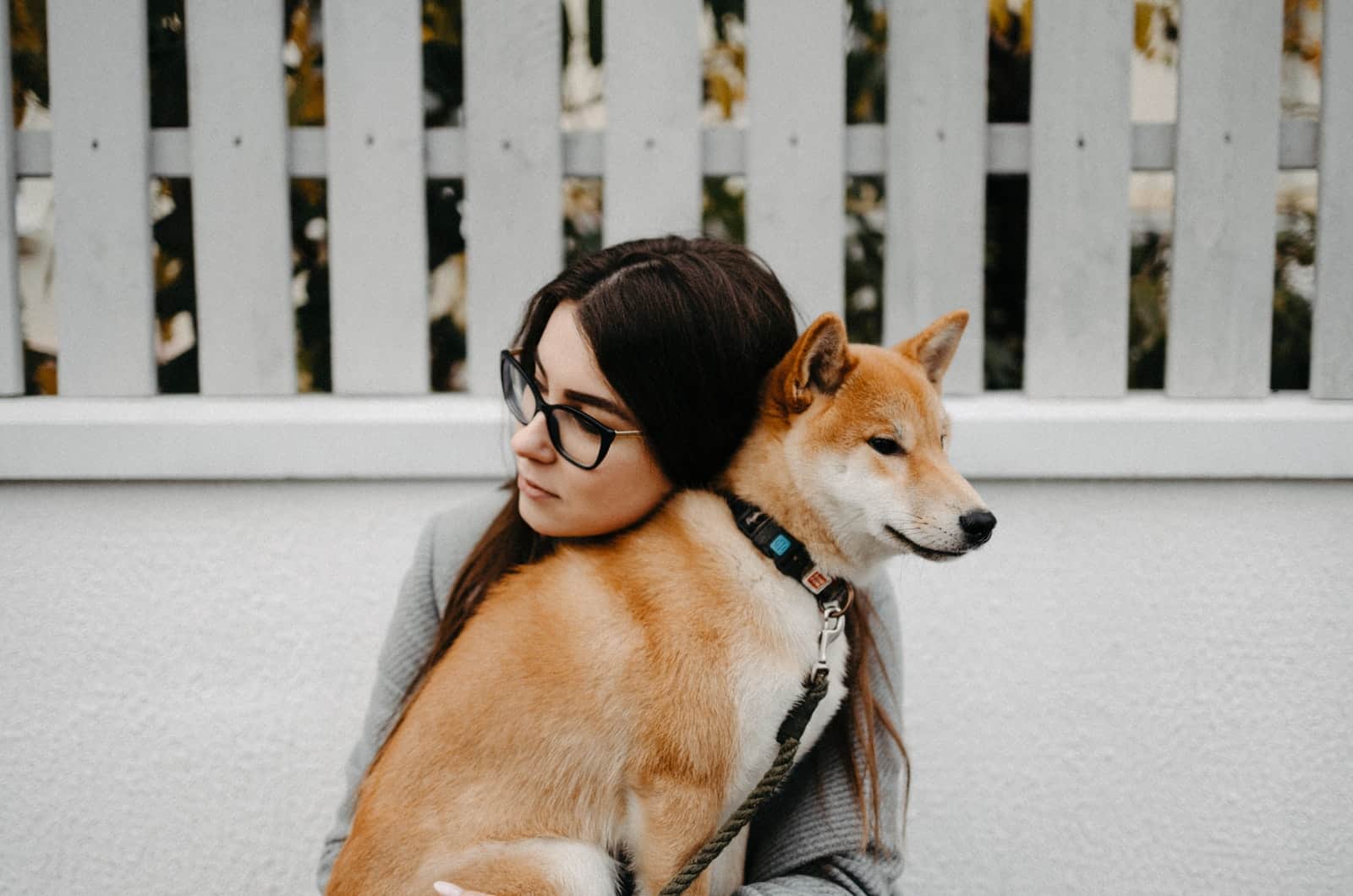
As you might have noticed already from the growth chart above, Akitas, like many other large breed dogs, experience most of their growth spurt in the first ten months of life; however, they continue to grow slightly over the next couple of months as well.
Because of their proportions, large dogs take more time to reach their full adult size than small dogs. Each dog is unique, and some dogs will grow slower and take more time to mature, but your Akita should reach its full adult size at approximately around two years of age.
At this time, these dogs should build their muscles and develop their signature stature. If you want to check if your dog has stopped growing, then we have a trick for you – look at your pup’s paws!
If your puppy’s paws look too big for his legs and body, then there is still room for him to grow and gain some weight.
READ ALSO: The Long Haired Akita: A Myth Or An Outcast? Let’s Find Out
Can Something Influence An Akita’s Growth?
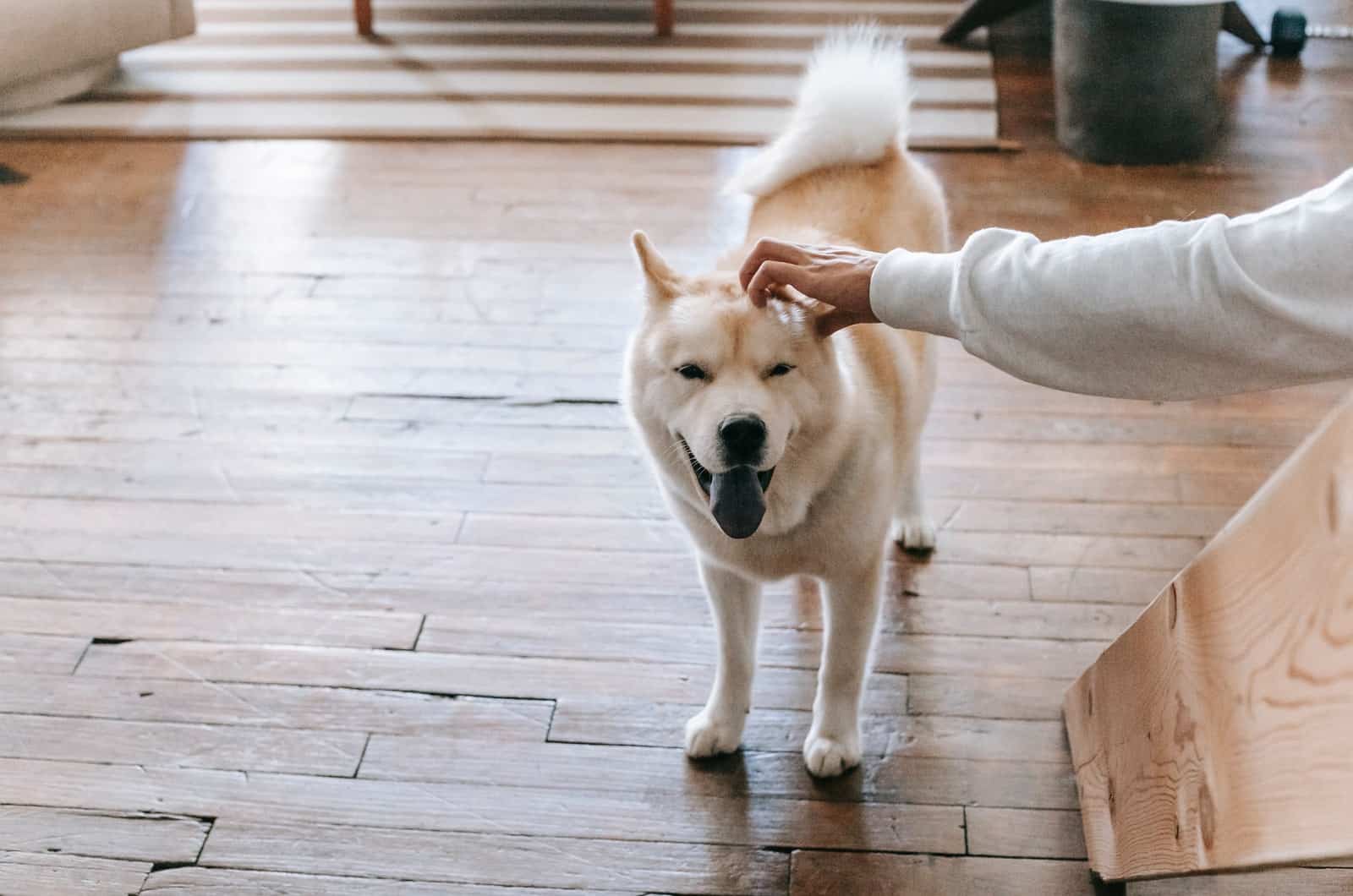
The answer is yes!
Every dog breed has general guidelines on how big they should get; however, there are always certain factors that can affect their growth rate, and there is no difference when it comes to the Akita breed.
Let’s look at what some of these factors are that you’ll want to keep track of:
Genetic Background
You know how people usually say to children, “Oh, you’re so tall, just like your father”, or something along those lines? It is a well-known fact that children inherit the characteristics of their parents. Well, the same goes for different kinds of animals, including dogs.
If we want to know how big our puppy will get, the best thing would be to look at its parents. Genes are pretty strong and they will usually shine through; however, there are also some exceptions here.
Usually, it goes like this — the average size of both parents will equal the puppy’s full-grown size. So, if both puppy parents are on the larger spectrum of the breed standard, the puppy will also be slightly larger, and the same is for smaller parents.
If it is possible, our advice would be that you should always try to visit the breeder and meet the puppy parents in person, so you can roughly picture how big your puppy will get.
However, keep in mind that there are exceptions to this rule since genes are also pretty tricky business, and sometimes certain puppies can come out smaller or unusually larger than their other littermates. But, that’s what makes breeding special, right?
What would the world look like if all of us were the same? Quite boring in my opinion.
Gender Differences
You must have noticed that we gave two separate growth charts for male and female dogs… well, the reason for this is that usually, males are slightly larger than females.
This is the case for many dog breeds. For example, you can see this if you look at the German Shepherd growth chart, the Rottweiler growth chart, or even growth charts of some smaller dogs like Corgis.
The reason for this usually lies in different bone structures and hormones of the two genders, so in most cases, male puppies are larger than female puppies. However, in some breeds, the differences between the genders are really minimal.
Having your Akita spayed or neutered can also affect your dog’s growth. If your dog is neutered or spayed (depending on the gender) too early, it will affect sex hormones, which then can cause your dog to grow taller and larger.
Additionally, this can also cause various health issues because your dog’s bones will grow longer than they should. Because of this, most veterinarians suggest spaying female Akitas between six and nine months of age, and neutering male Akitas when they reach 12 months of age.
RELATED: 9 Signs Your Dog Needs To Be Neutered
Diet & Nutrition

A proper diet and nutrition is extremely important for all dogs. If you want to ensure that your Akita grows up healthy and happy, you need to ensure that he or she eats healthy in the first place.
Whether you choose to feed your Akita dog with some of the commercial dog food options or prepare some home-cooked food for your pup, you need to make sure that you choose a high-quality and nutritious diet that your dog can benefit from.
A dog’s diet should be adapted to your dog’s developmental stage, age, and his nutritious requirements at the time; for example, an Akita puppy should be fed special puppy food, an adult Akita should be fed adult dog food, and a senior Akita should be fed special senior dog food.
It is important to know when to make necessary changes in your dog’s diet because if not being fed the appropriate diet, your dog can easily become underweight or overweight, which can also affect his size.
Various veterinarians and nutritionists recommend feeding your 7+ year-old Akita with a light and less-calorie dense diet that would prevent the onset of various health diseases.
You have to remember that feeding large breed dogs such as the Akita is not the same as feeding small dogs because certainly, the Akita will need a completely different diet than, for example, a Chihuahua.
Proteins, necessary nutrients, vitamins, minerals, and supplements are all very important in acquiring the dog’s healthy weight.
If you are not sure how much you should be feeding your dog, then the best thing is to contact your veterinarian to get a proper assessment of your dog’s status and appropriate diet guidance.
RELATED: How Heavy Should My Dog Be? A Guide To A Fit & Healthy Pup
Activity Level
Due to their hunting-dog background, Akitas are quite active dogs. They are not as high-energy and hyper of dogs as some can be, but they do require moderate daily exercise in order to stay in shape.
Around 60 minutes of daily activity should be enough for these doggies. Physical activity is important for dogs to promote healthy growth and allow bone density to be properly developed.
Dogs that are under-exercised are at risk of becoming overweight, while on the other hand, dogs that are way too heavily exercised may suffer from damage to their growth palates. All of this can lead to growth problems, so it is important to find the perfect balance.
RECOMMENDED: How Often Do You Walk Your Dog? Learn The Desirable Frequency
Overall Health
Akitas, like many other purebred dogs, are prone to various health issues that can seriously affect their growth rate and lifespan. Poor health is often the cause of many developmental problems in various dog breeds.
If you want a healthy dog, the first step would be to purchase your puppy from a reputable and highly responsible breeder who takes good care of his dogs in order to ensure the healthiest and happiest puppies.
The next step would be to take your dog for regular vet visits and health checks, and monitor his diet and physical activity.
Akitas are prone to these potential health issues that can affect your dog’s growth:
· Gastric Dilatation Volvulus (GDV) – commonly known as “bloat”
· Obesity
Is My Akita Puppy Overweight?
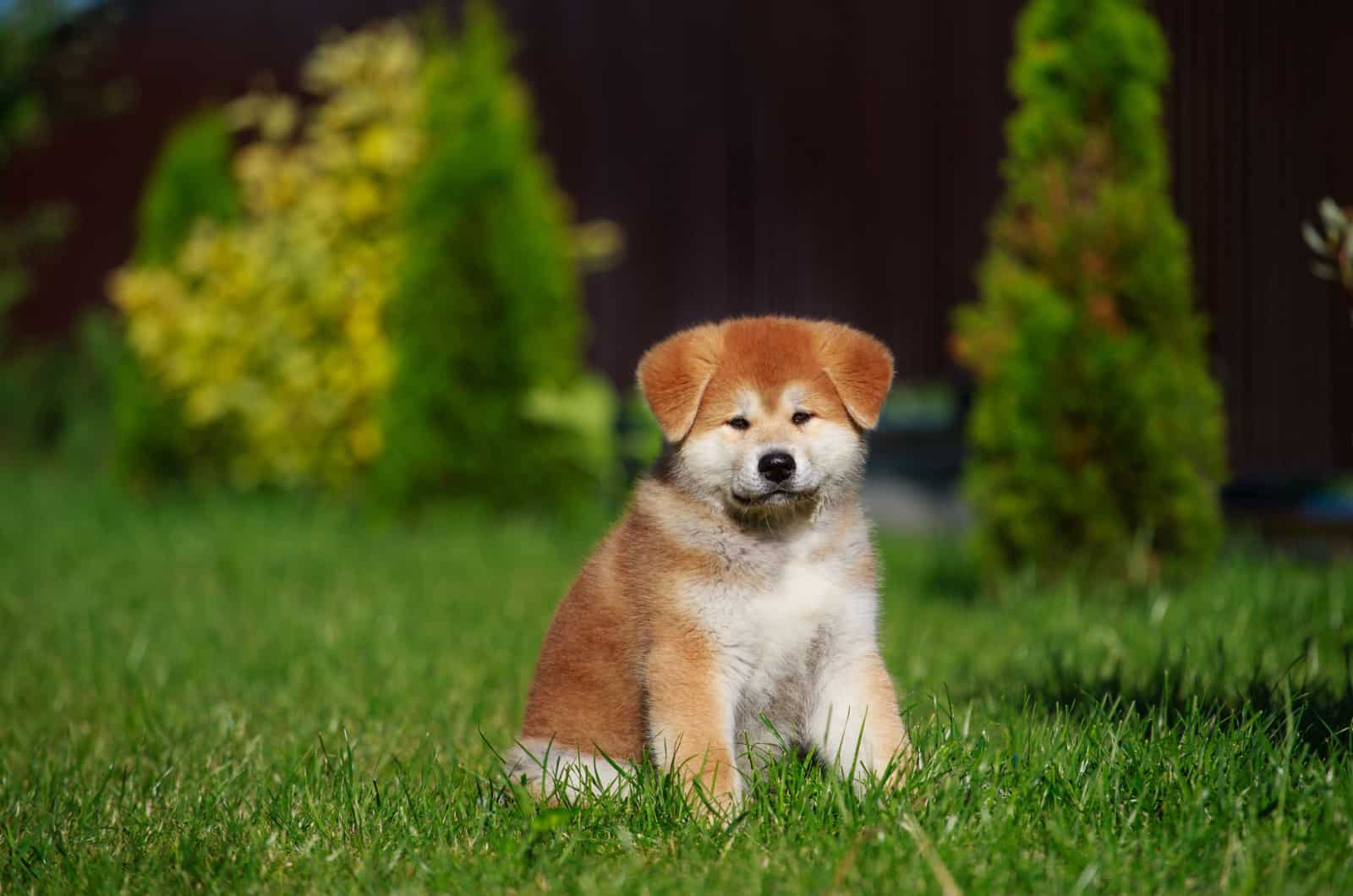
Many dog owners struggle with knowing if their dogs are overweight, underweight, or at the perfectly healthy and maintainable weight.
A Growth chart is what is going to tell you the perfect balance of your dog’s weight and height, but you should also be able to properly measure your dog and determine if he is too fat or too thin.
Obesity is a huge issue for many dog breeds, and the main cause for this is a lack of exercise, an unhealthy diet, and the owner’s improper care.
You can determine if your dog is overweight or not with a very simple and fast “hand” test. When your dog is calm, preferably after a cuddle session, place your hand on your dog’s back.
If your Akita dog is overweight, he will have a large layer of fat covering his ribs, and you’ll have to apply a certain amount of pressure in order to feel his ribs. On the other hand, if your dog’s ribs are visible, if he looks frail, and he is visibly thin, then he is certainly underweight.
For the perfect, healthy weight, there should be a light layer of fat covering your dog’s ribs, but you should still easily feel them with your hand without applying any pressure. This is the easiest way for you to determine if your Akita puppy is overweight or perhaps underweight.
If you are still unsure that you’re doing it properly, please consult a veterinarian.
READ NEXT: Miniature Akita: Everything You Always Wanted To Know
Final Verdict
Taking care of the dog is not as easy as it may seem. Each breed is special in its own unique way, and requires proper care, so having a customized Akita growth chart is very important.
With the help of this chart, you’ll be able to raise your puppy into the stunning dog that the Akita Inu has simply always been. There is a reason why they are considered legends in their native country of Japan.
Unfortunately, just as many other purebred dogs, Akitas can suffer from some health issues, which is why you need to pay special attention to every part of your puppy’s growth. If you notice anything unusual, please take your dog to the vet as soon as possible.
Other than that, if you take good care of these dogs, you are bound to have one of the most loyal and loving dogs there are in the canine world. A highly alert, intelligent, spirited, and extremely loyal doggie will be your forever friend and companion that you will forever cherish.
Related Content
Golden Retriever Growth Chart – Everything You Should Know!
English Bulldog Growth Chart — When Will My Pup Stop Growing?
